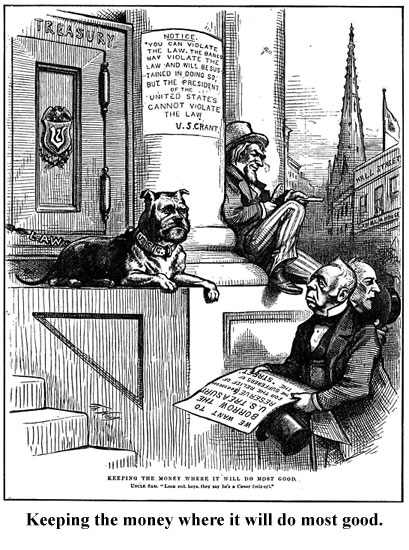The Politics of Industry
The policies of the government supported the theory of social Darwinism. It approached private economic matters using a laissez-faire policy that meant that the government should play a limited role in business. As strong businesses got stronger, everyone would benefit. The government wanted to use policy to support the strength of all business. Everyone did not see their role as supportive.
 |
||
| Money cartoon |
The federal government had used legislative power to increase farming in the Western plains, but as industrialists became richer, farmers and smaller businesses became poorer. The politics of industry worked against farmers. The federal government had levied tariffs on imported goods to encourage the buying and selling of U.S. goods. While tariffs helped farmers by raising the price on farm imports, they raised the price of manufactured goods and prevented Europeans from purchasing American crops. Tariffs protected industry because they priced out foreign competition and allowed industrialists to have greater control of prices.
Farmers were also concerned that the government was limiting the amount of money in circulation. When money is limited, it causes deflation, and the value of the dollar increases. When the dollar is worth more, money used to repay loans is worth more than the money borrowed. The price of goods also decreases. Farmers preferred inflation, which makes their products worth more and money used to pay back loans worth less. When President Hayes vetoed the Bland-Allison Act, a piece of legislation designed to cause inflation, farmers went deeper into debt. However, banks and industrial enterprises were protected when the federal government limited the amount of money that was in circulation. The government seemed to be supporting industry.
Cartoon depicting the politics of industry